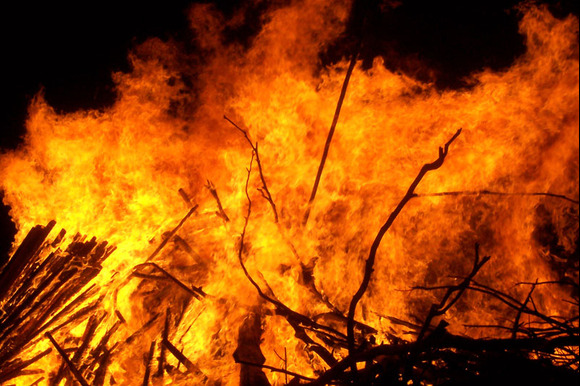
By Fir0002 - Author, CC BY-SA 3.0,
Japan is currently facing its most significant wildfire in over thirty years, as a fire continues to ravage the forested region of Ofunato, a coastal city located on the eastern shore of the country’s main island. This wildfire, which has persisted for several days, has resulted in at least one fatality, compelled thousands of residents to evacuate, and caused extensive damage to numerous homes.
The blaze has already consumed approximately 1,800 hectares (4,500 acres) and shows no indication of abating, with officials reporting an additional expansion of 400 hectares since Saturday. The swift progression and destructive nature of the fire are placing considerable pressure on firefighting resources.
The Fire and Disaster Management Agency indicated that the fire was first detected on Wednesday. By that evening, at least 84 homes had sustained damage. During inspections of the affected area on Thursday, authorities discovered the body of a man, although the identity of the deceased has yet to be revealed.
As of Sunday morning, evacuation orders have been issued for around 4,600 individuals, with 1,200 residents currently seeking refuge in emergency shelters. Firefighting operations have been intensified, with nearly 1,700 firefighters from 14 different prefectures mobilized to combat the blaze. Additionally, helicopters have been deployed to aid in the firefighting efforts, as aerial footage captured aircraft maneuvering above the rising smoke from the fire.
The recent wildfire has highlighted the susceptibility of Japan’s forested areas to severe fire conditions, a growing concern as climate change increasingly impacts weather patterns. Last year marked Japan’s hottest year on record, a trend that is expected to persist if global warming is not addressed.
As firefighting operations progress, residents of Ofunato and surrounding regions find themselves in a state of uncertainty, yearning for relief from the ongoing crisis. The extent of progress in controlling the fire remains unclear, with authorities yet to provide a comprehensive update on the damage incurred since Wednesday. The cause of the fire is still under investigation.
This incident represents the most significant forest fire Japan has encountered since the 1992 wildfire in Hokkaido, which devastated over 1,000 hectares. The current blaze in Ofunato is intensified by the region’s unusually arid weather, with February 2025 recorded as the driest February in more than twenty years, resulting in minimal rainfall.
In addition to the fire in Ofunato, smaller blazes have been reported in other areas, such as Yamanashi and Nagano, further straining Japan’s firefighting capabilities.
With rising temperatures and ongoing dry conditions, officials are urging continued vigilance and collaboration from local residents as firefighting efforts escalate. The government has also advised authorities in other prefectures to remain alert for possible fire outbreaks.




